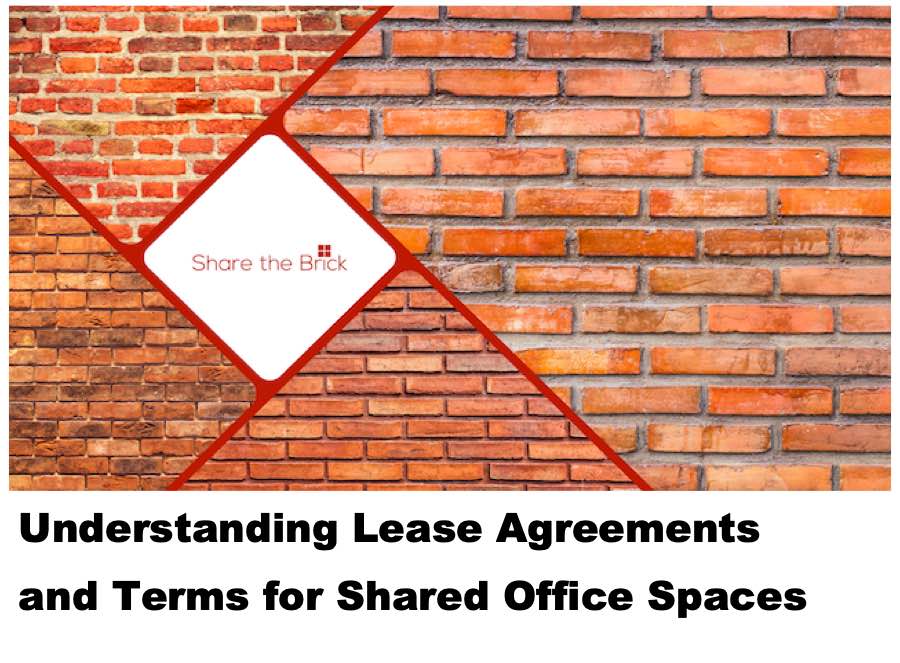Understanding Lease Agreements and Terms for Shared Office Spaces
Understanding lease agreements and terms is essential when entering into a shared office space arrangement. Lease agreements outline the rights, responsibilities, and obligations of both tenants and landlords and having a clear understanding of these terms is crucial for a successful tenancy. In this article, we will provide you with a comprehensive guide to help you navigate lease agreements and understand key terms related to shared office spaces.
Lease Agreement Basics:
A lease agreement is a legally binding contract that governs the relationship between the tenant and the landlord. When leasing a shared office space, it's important to understand the following elements:
Parties involved: Identify the tenant(s) and the landlord or property owner.
Term: Determine the lease duration, including the start and end dates.
Renewal options: Assess whether the lease can be extended or renewed.
Termination clauses: Understand the conditions under which the lease can be terminated.
Rent and Payment Terms:
Rent is a fundamental aspect of lease agreements. Consider the following terms related to rent and payment:
Base rent: The fixed amount payable by the tenant for occupying the shared office space.
Rent escalation: Determine if and how the rent will increase over time, typically through fixed increments or in line with market rates.
Additional costs: Understand if there are additional costs, such as utilities, maintenance fees, or common area charges, and how they are allocated among tenants.
Security Deposit and Insurance:
Lease agreements often require tenants to provide a security deposit and maintain insurance coverage. Familiarize yourself with the following terms:
Security deposit: Understand the amount required, conditions for its return and any deductions that may be made.
Insurance requirements: Determine the type and amount of insurance coverage needed, such as liability insurance or property insurance.
Maintenance and Repairs:
Shared office spaces typically have shared responsibilities for maintenance and repairs. Pay attention to the following terms:
Maintenance obligations: Understand which party is responsible for general maintenance tasks, such as cleaning common areas or servicing shared equipment.
Repairs: Determine the process for reporting and addressing repairs, and the respective responsibilities of the tenant and landlord.
Alterations and Modifications:
Shared office spaces may require permission for alterations or modifications. Consider the following terms:
Tenant improvements: Determine if you are allowed to make changes to the space and if so, the process for obtaining consent and any associated costs.
Restoration: Understand if you are required to restore the space to its original condition at the end of the lease.
Use and Access:
Lease agreements outline the permitted use of the shared office space and access provisions. Pay attention to the following terms:
Permitted use: Understand any restrictions or limitations on how the space can be used, such as specific business activities or noise restrictions.
Access rights: Determine when and how you can access the shared office space, including hours of operation and security measures.
Dispute Resolution and Legal Remedies:
Lease agreements typically include provisions for resolving disputes and legal remedies. Familiarize yourself with the following terms:
Dispute resolution: Understand the process for resolving conflicts, such as mediation, arbitration, or court proceedings.
Breach and Remedies: Determine the consequences of breaching the lease agreement and the available legal remedies.
Understanding lease agreements and terms is crucial for a successfully shared office space tenancy. By familiarizing yourself with the basics of lease agreements, rent and payment terms, security deposits, maintenance responsibilities, use and access provisions, and dispute resolution mechanisms, you can enter into a shared office space arrangement with confidence. Remember to carefully review and seek professional advice if needed before signing any
lease agreement to ensure that it aligns with your business needs and protects your rights and interests as a tenant.



Leave a Reply